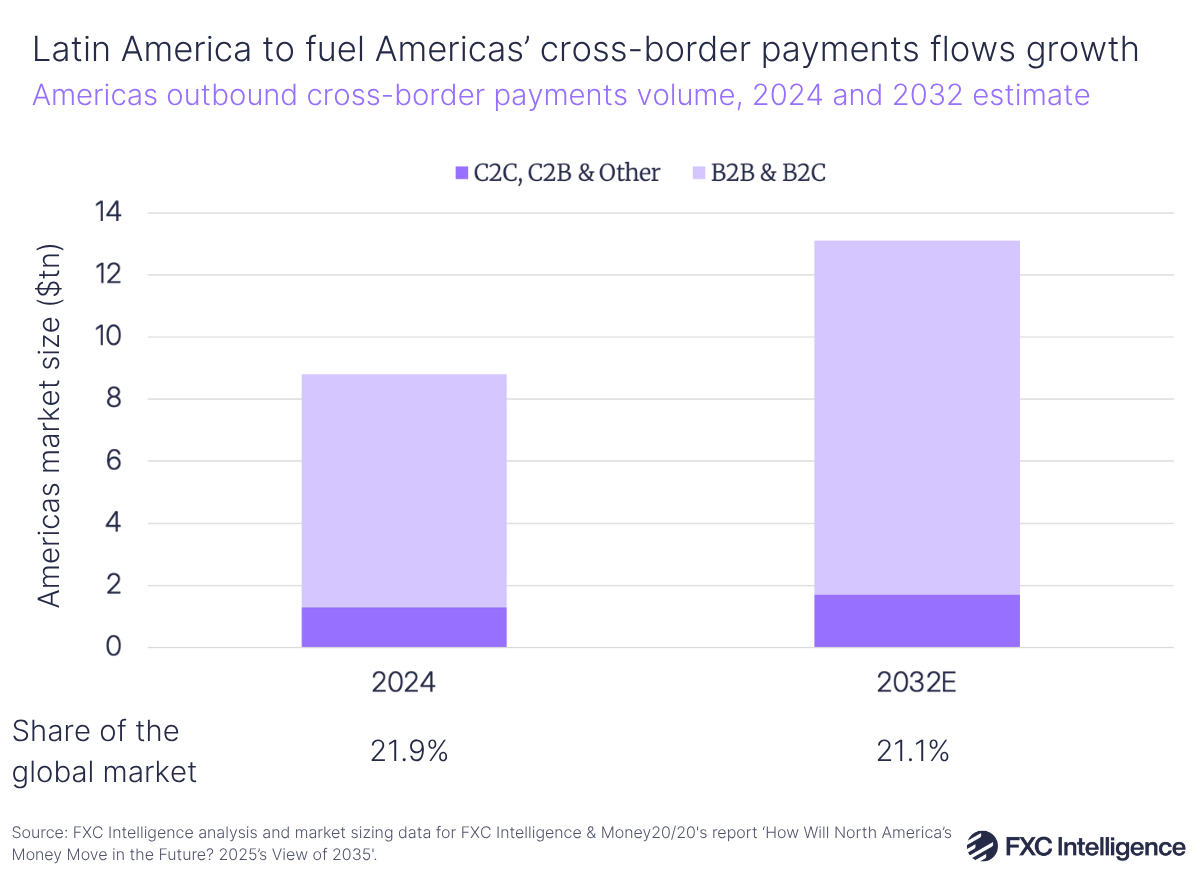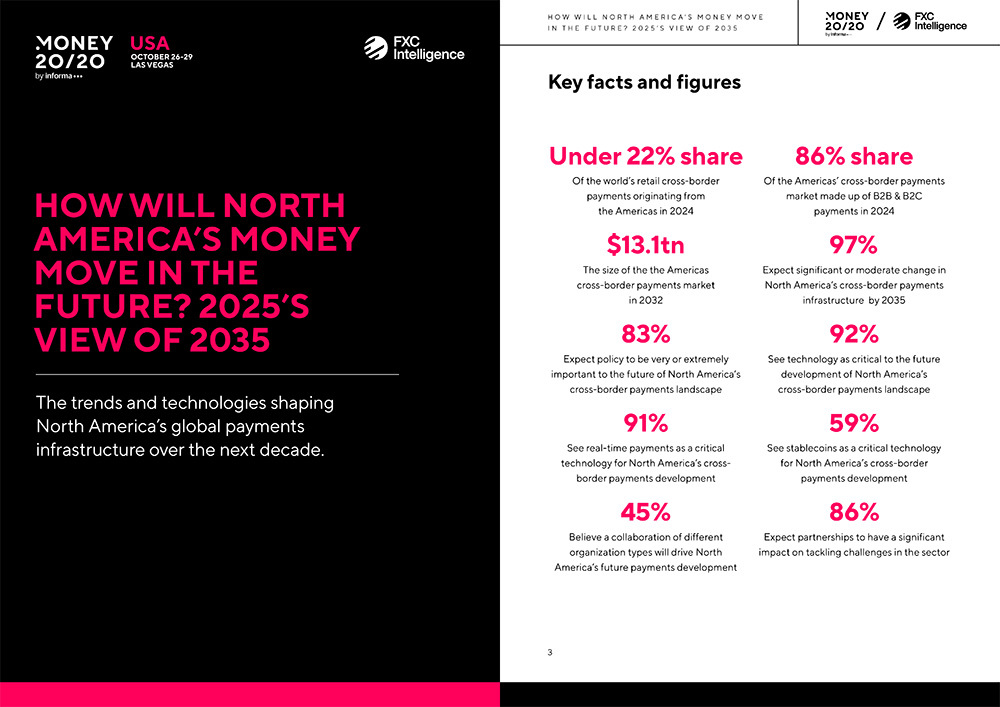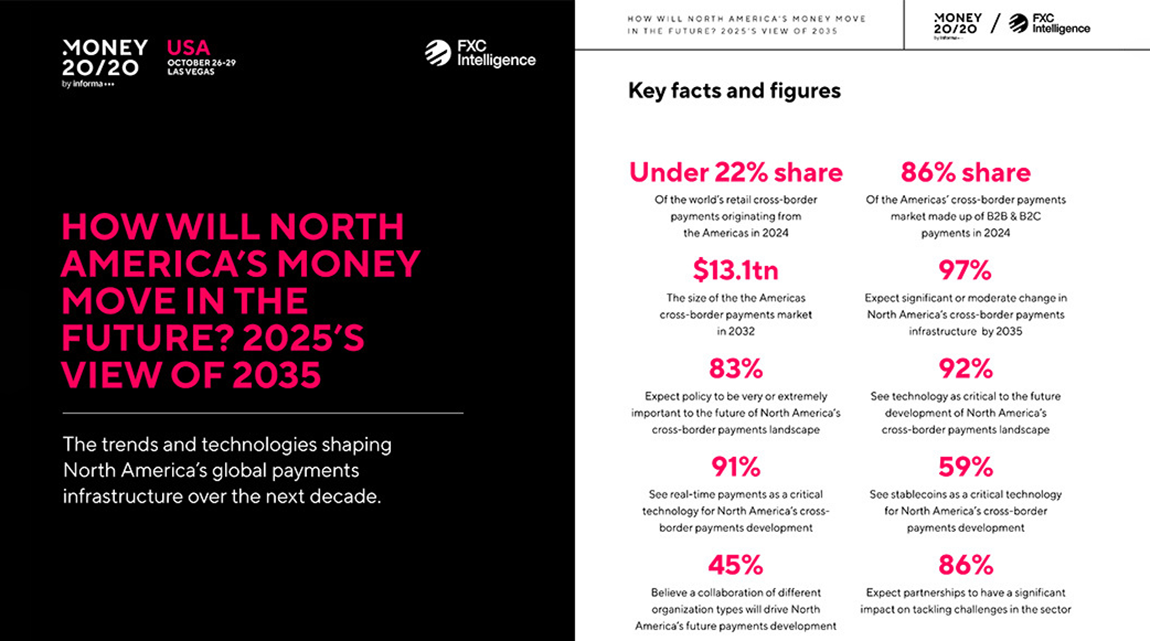This week saw us launch the third report in our partnership with Money20/20: How Will North America’s Money Move in the Future? 2025’s View of 2035. Based on a survey of fintech professionals from across the region, as well as our own market sizing data, research and expertise, this provides a dive into the current state of North America’s cross-border payments landscape and how it will evolve in the future.

As part of the report, we released new market sizing data for the region, which shows that outbound non-wholesale cross-border payments from the Americas are set to grow from $8.8tn in 2024 to $13.1tn in 2032.
Alongside this, the payments world is expected to see significant evolution, with 97% of the experts surveyed expecting significant or moderate change to North America’s cross-border payments infrastructure over the next decade.
This represents the highest expectation for change out of the regions we have produced reports for globally, with 94% of respondents giving the same response in Europe and 83% in Asia.
While 92% of respondents see technology as critical to driving this change, 83% see policy as equally important, with the stablecoin-focused GENIUS Act, the One Big Beautiful Bill’s remittance tax and Canada’s Retail Payment Activities Act all playing a role.

While stablecoins were seen as a key technology for the region’s future development by 59% of experts surveyed, real-time payments was unexpectedly ranked as the most important technology for North America. 91% of experts see it as vital to the future development of cross-border payments in the Americas – a higher share than any other region.
This is likely in part due to recent advances in domestic real-time payments in the region, as well as the early stages of initiatives to interconnect what were domestic networks at a global level.
The full report, which includes additional analysis across technology, policy, companies and countries, can be downloaded via Money20/20’s website.


